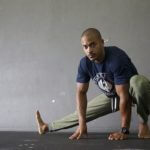Risk factors for straining a muscle
Almost all of us have strained a muscle at some stage in our lives. For some people it may have been a mild “tweak” that resulted in a slight niggle for a few days, whereas some people would have sustained a more significant strain resulting in 1-2 months of pain and discomfort. The major muscles that are most commonly torn are our hamstrings (back of thigh), quadriceps (front of thigh) and calves.

Studies have shown that the single BIGGEST risk factor for this occurring is if we have had a previous muscle strain in that same muscle. Anecdotally, you may be one of those people that just keeps re-tearing the same muscle every season, or know someone who is always having problems with the same muscle. This is particularly true of hamstrings and calf muscles, but less so with quadriceps strains.
The SECOND BIGGEST risk factor is increasing age. Unfortunately, as we age our muscle tissue becomes less elastic, less supple, less forgiving, and subsequently becomes more easily torn.
In terms of specific attributes of a muscle that increase the likelihood of it sustaining a tear, there are also 2 main characteristics:
- Muscle weakness

Stretching and Strengthening can significantly reduce the risk of injury - Muscle tightness
There are other risk factors which have been associated with an increased incidence of muscle tears:
- Playing sport/running on hard ground (eg. a sports oval where there hasn’t been recent rain)
- Certain types of grass have a higher incidence of strains
- Genetic or systemic conditions that make muscle strains more likely (connective tissue diseases, or long term steroidal use)
The best way to reduce these risks is to address the main characteristics of YOUR muscles. A Physiotherapist can help you to identify if your muscles are generally WEAK, or TIGHT, or a combination of both. By performing targeted exercises to improve the strength, endurance and flexibility of your muscles, you can reduce the likelihood of sustaining a muscle tear.